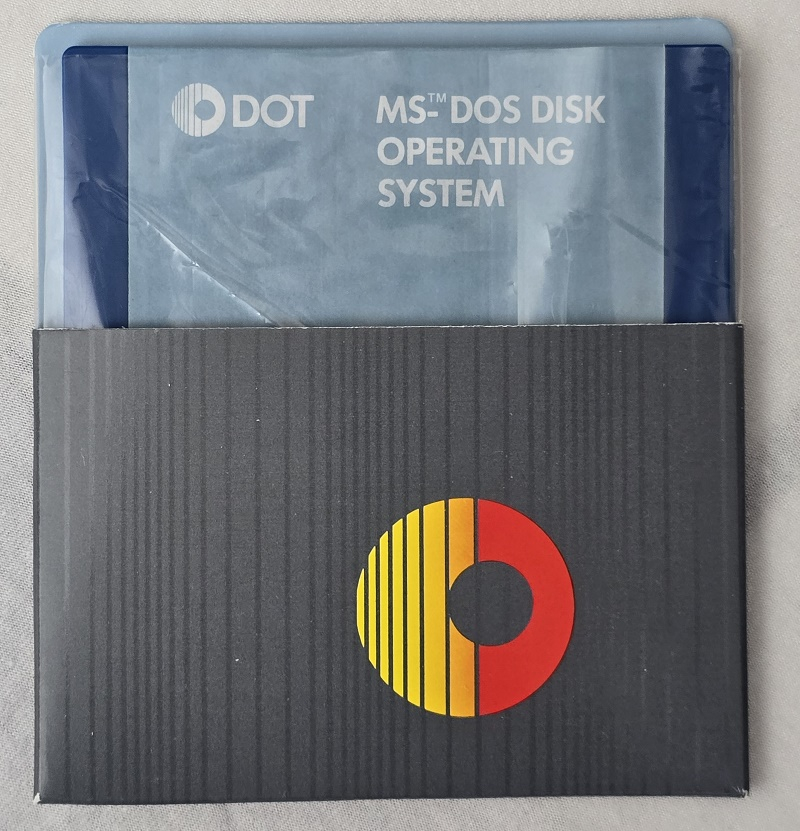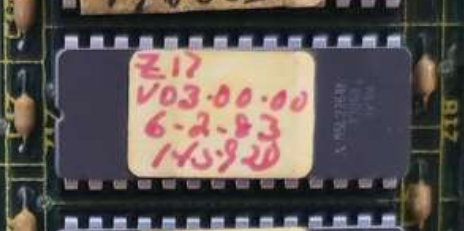Computer Devices Dot MS-DOS v1.25 and Computer Devices Dot 8088 CPU and CRT Card ROMs
https://archive.org/details/dot-ms-dos
Computer Devices Dot MS-DOS v1.25
by Computer Devices Inc
Publication date 1983-04
Topics floppy, disk image, operating system, dos
Item Size 5.5M
"This is a flux image of the MS-DOS operating system for use with a Computer Devices Dot. This computer uses 3.5in floppy drives was released in 1983, before a standard was settled on. As a result the disks for it are not compatible with any other PCs. The disk image here is provided in KryoFlux raw format for writing back to a disk directly."
https://archive.org/details/cdi-dot-roms
by Computer Devices Inc.
Publication date 1983-06
Topics ROM, computer
Item Size 2.0M
"These are the ROMs from an 8088 CPU card and CRT controller from a Computer Devices Dot. The computer was IBM compatible design wise but had an unusual wide format CRT with the ability to display 132x25 characters."


Computer Devices Dot MS-DOS v1.25
by Computer Devices Inc
Publication date 1983-04
Topics floppy, disk image, operating system, dos
Item Size 5.5M
"This is a flux image of the MS-DOS operating system for use with a Computer Devices Dot. This computer uses 3.5in floppy drives was released in 1983, before a standard was settled on. As a result the disks for it are not compatible with any other PCs. The disk image here is provided in KryoFlux raw format for writing back to a disk directly."
https://archive.org/details/cdi-dot-roms
by Computer Devices Inc.
Publication date 1983-06
Topics ROM, computer
Item Size 2.0M
"These are the ROMs from an 8088 CPU card and CRT controller from a Computer Devices Dot. The computer was IBM compatible design wise but had an unusual wide format CRT with the ability to display 132x25 characters."



Comments
Interesting and odd little machine. Short screen CRTs like that were used in some single-purpose word processing machines. I wonder if this was really intended to be a word processing machine too. I wonder exactly how IBM PC compatible it really was.
"That's Gurgle's tracking for you.". Yes, dammit. This time I'm not unhappy about it.
https://archive.org/details/@akbkuku
I remember people complaining about the 3.5" drive in my Kaypro 2000 being "non-standard", even though the format was 100% the same as eventually used in the IBM PS/2 (and I think also the same as the IBM Convertible)
So these would have been an even bigger headache.
The fact that CDI was able to put together such a high functioning machine with so few hardware and software resources just amazes me.
And technology was moving at a breakneck speed. We just came to expect back then that something new would pop up every day.
Also: did you catch the part that the Dot could also function as a terminal to mainframe?
Most "personal computers", being programmable devices, would use software based terminal programs instead of ROM based.
But with a ROM based terminal, you could use less ram, did not need an OS, and could do without a disk drive. They could have chosen to sell a disk-less version if they had wanted to.
BTW: It looks like there is a code listing for their io.sys in the deleted space.
By the way, the video mentions the difficulty of getting files on to the machine. The disk is a standard FAT, and uses normal 512 byte sectors, but is formatted for DOS 1, so it does not have bios parameter block info describing the geometry.
A disk formatted with a PBP as follows should theoretically work:
Tracks: 70
Sectors: 8
Heads: 1
Root directory entries: 64
Sectors per cluster: 2
Format ID: $F8
Sector Fill: $00
Interleave: 1
The kick in the teeth is the non standard 70 track floppy TPI track spacing. A normal 3.5" drive can't read/write that. But if they have a Kryoflux hooked up to one of these early drives, then generating a disk should work.
Looking at MSDOS.SYS with a hexer, proudly displayed is:
"MS-DOS version 1.25..Copyright 1981,82 Microsoft, Inc"
Half expect that there'd be a crank to start the old girl up.
Base Software KIT : MS-DOS(TM), BASIC(TM) Interpreter and documentation
GW BASIC Interpreter with Graphics
Basic Language Compiler
FORTRAN Compiler
PASCAL Compiler
COBOL Compiler
DOT MACRO Assembler
IBM 3270 emulator
IBM 3780 emulator
Z-80, CP/M 2 .2 including Z-80, CP/M 2 .2 diskette, manual, and single use license
Diagnostic kit including manual, diagnostic diskette, two formatted diskettes
IBM to DOT, DOT to IBM File transfer utility kit . Includes cable, 3-1/2 inch
diskette, 5-1/4 inch diskette software and documentation .
MULTIPLAN(TM) Spreadsheet From Microsoft
Volkswriter(TM) From Lifetree
Time Manager(TM) From Datamension Corp .
Records Manager(TM) From Datamension
Project Manager(TM) From Datamension
Report Manager(TM) From Datamension
DOT MS-DOS BIOS KIT (Includes Documentation) with BIOS licenses
Due to the low number manufactured, some of these may never have left the building. Some of these, like the compilers, may be identical to the IBM PC version.
GW BASIC might support its oddball graphics resolutions. It would be interesting to see a graphics program running.
I mean, it's ms dos 1.25, and already, people have recognized it's potential, and imagining what new ways hardware can be configured for new uses.
So now, we wait.